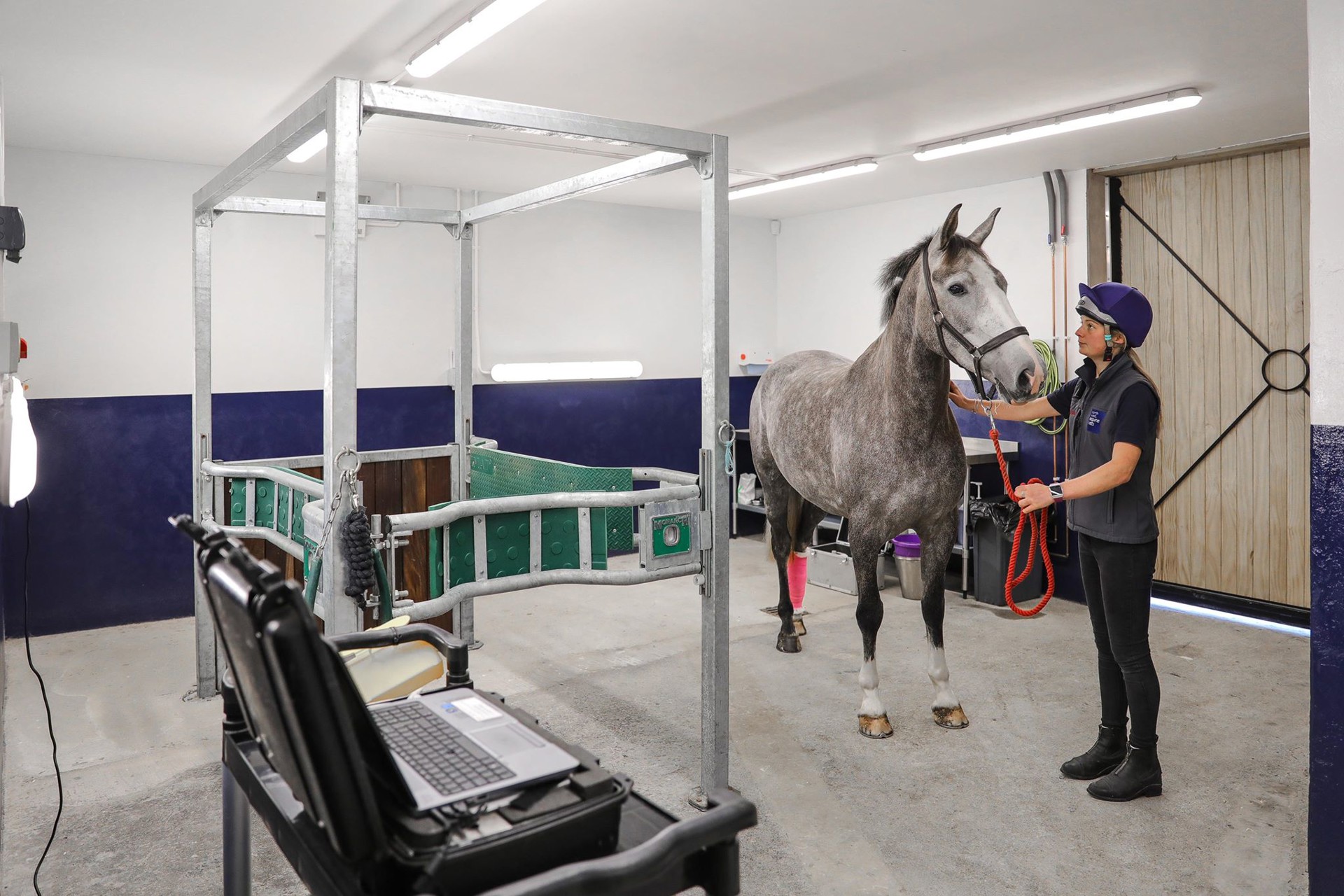Want to know more about respiratory endoscopy?
14 Aug 2019
Respiratory disease can affect the entire tract, but often is confined to the URT or the LRT separately. Sometimes, the symptoms are very obvious, and can be diagnosed by clinical examination. Other times the clinical signs are very subtle and further diagnostics need to be done.
We use an endoscope to view the inside of the respiratory tract, providing more information and allowing samples to be taken from deep inside the LRT. An endoscope is a long, bendy tube with a light and camera on the end. It can be passed up the nose into the cavities of the head, through the larynx and into the trachea and lungs.
Common reasons to use an endoscope include: persistent cough, bleeding nose, airway noise when exercising or poor performance & breathlessness when exercised. The procedure is painless but some horses find it a little uncomfortable. Horses may be sedated, but some conditions are better viewed completely conscious. One of the most common conditions investigated using endoscopy is recurrent airway obstruction, or equine asthma (used to be known as COPD). The endoscope allows us to visualise the excess discharge, often within the LRT, to take samples to differentiate between mucus and pus. This enables appropriate treatment to be prescribed.
Another common problem investigated using the endoscope (this time of the URT) is recurrent laryngeal neuropathy. Horses with this condition are sometimes called ‘roarers’ because they make a loud noise during exercise. One half of the larynx has a reduced nerve supply and doesn’t open when the horse breathes in, causing the roaring noise, and reducing the airflow to the lungs. Endoscopy at rest can diagnose severe cases, but the more specialised “over land” endoscopy entails securing a thin endoscope in situ in the respiratory tract, and viewing the larynx and other tissues whilst the horse is actually exercising. Surgery is used to correct laryngeal neuropathy.

How Do We Treat it?
Treatment for sinusitis involves addressing the underlying cause (e.g. extracting a diseased tooth or surgically removing a cyst or mass) and then removing the pus which has accumulated in the sinuses.
This is done by creating either a small hole (trephine) or flap in the skull over the frontal sinus and flushing the sinuses with clean warm salt water. Often this flushing is repeated for several days through a soft catheter that remains inserted through the skull.
Although this surgery may sound drastic, it is very well tolerated by most horses and usually done under sedation.